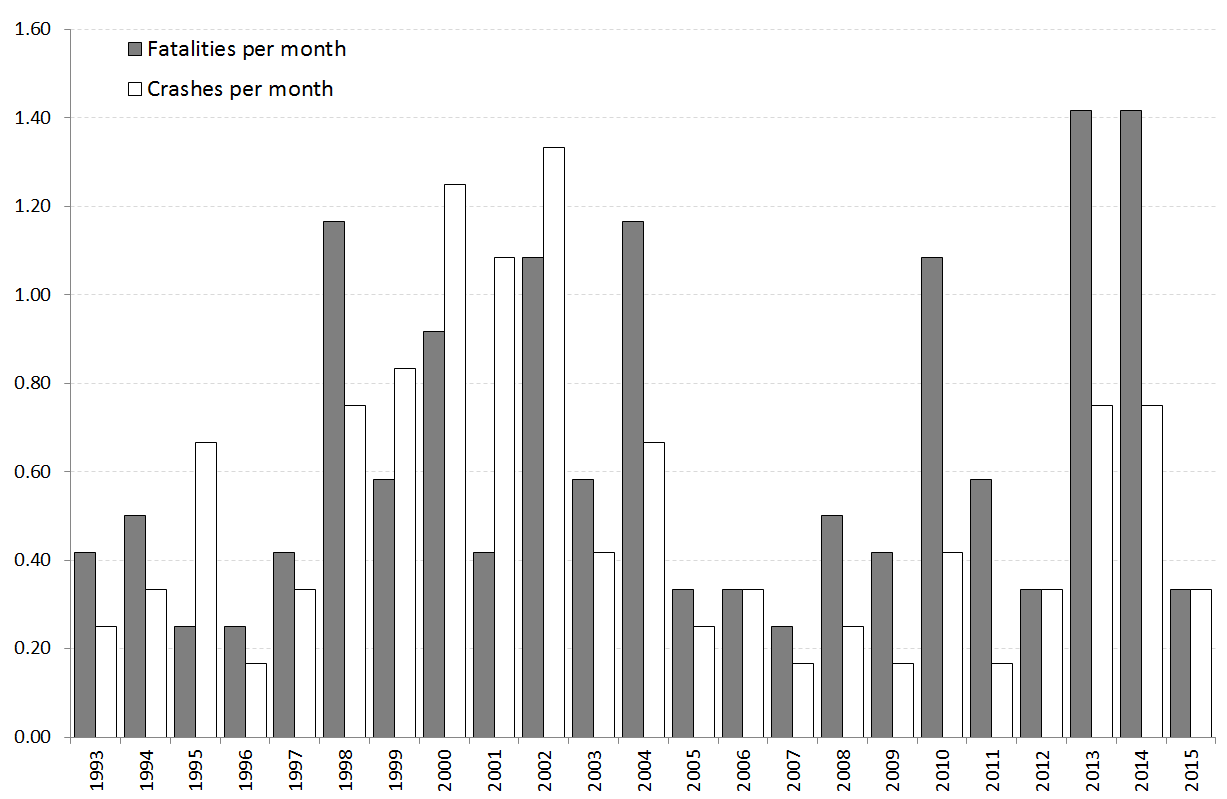H. H. Hon1, N. Barry1, U. MacBean1, J. P. Anagnostakos1, T. R. Wojda1, D. C. Evans2, C. Jones2, M. Portner1, B. A. Hoey1, W. S. Hoff1, P. Thomas1, S. P. Stawicki1 1St. Luke’s University Health Network,Department Of Surgery,Bethlehem, PA, USA 2Ohio State University,Department Of Surgery,Columbus, OH, USA
Introduction: Aeromedical transport (AMT) is well-established, safe, and reliable life-saving option for rapid patient transfers to healthcare delivery hubs. However, due to the very nature of AMT, fatal and non-fatal occurrences are bound to happen. This study reviews aeromedical incidents since 2003, aiming to provide additional insight into a wide range of factors potentially associated with fatal and non-fatal AMT incidents (AMTI). We hypothesized that weather/visual conditions, post-crash fire, and time of day are all correlated with the risk of AMTI with ‘injury or fatality’.
Methods: Various specialty databases were queried for AMTI between January 1, 2003 and June 30, 2015. Additional Internet-based resources were also utilized to find any additional AMTI (including non-US occurrences) in order to augment the event sample size available for analysis. Univariate analyses of the collected sample were then performed for association between ‘fatal crash or injury’ (FCOI) and weather/visual conditions, aircraft type/make, pilot error, equipment failure, post-incident fire, time of day (6am-7pm vs 7pm-6am), weekend (Fri-Sun) versus weekday (Mon-Thurs), season of the year, presence of patient on board. Variables reaching significance level of P<0.20 were included in multivariate analysis.
Results: A total of 58 AMTI were identified. Helicopters were involved in 51/58 AMTI, with 7/58 fixed-wing incidents. Comparing pre-2003 data with post-2003 data (Figure 1), we noted an overall decrease in AMTI per month (0.70 versus 0.38, respectively). However, the number of fatalities per year increased slightly (7.20 vs 8.08, respectively). There was no association between aircraft make/model and FCOI. In univariate analyses, weather/visual conditions, time of incident (7pm-6am), and post-incident fire all reached statistical significance sufficient for inclusion in multivariate analysis. Factors independently associated with FCOI included post-incident fire (O.R. 12.6, 95% CI 1.16-137.2) and time of incident between 7pm and 6am (O.R. 8.28, 95% CI 1.25-55.0). Weather conditions and impaired visibility were not independently associated with FCOI.
Conclusion: The current study supports previous observation that post-crash fire is independently associated with FCOI. However, our data do not corroborate published reports suggesting that weather conditions and impaired visibility are predictive of fatal AMTI. In addition, this study demonstrates that flights between the hours of 7pm-6am may be associated with greater odds of FCOI. Efforts directed at identification, remediation and active prevention of factors associated with AMTI and FCOI are warranted given the global increase in aeromedical transport.
